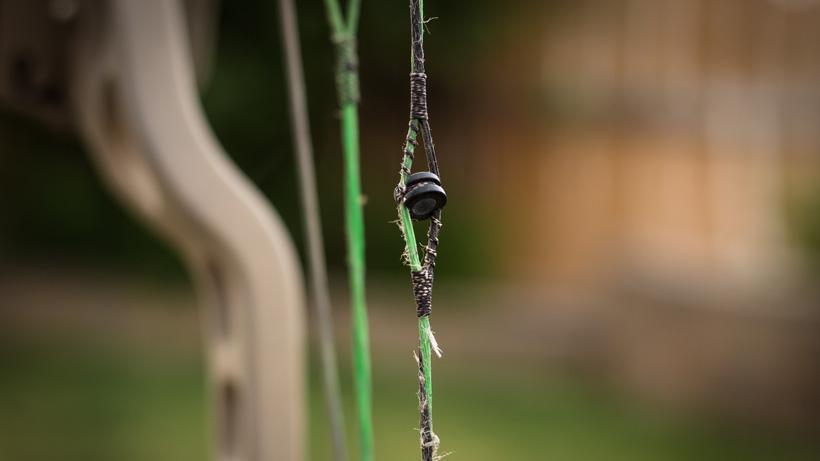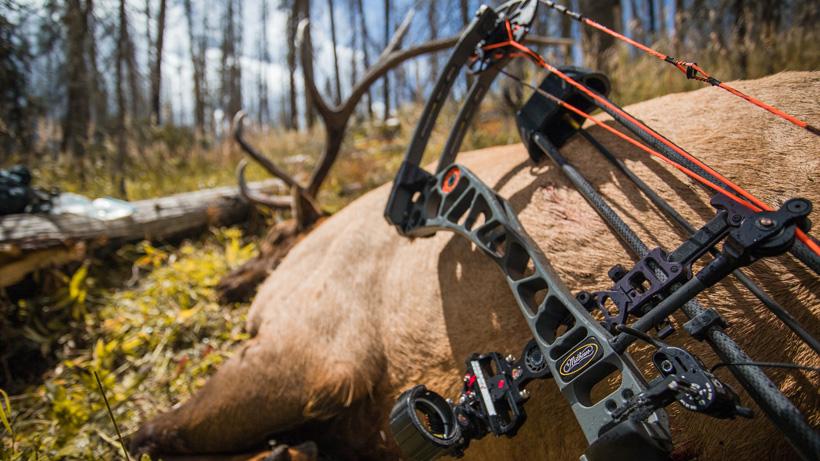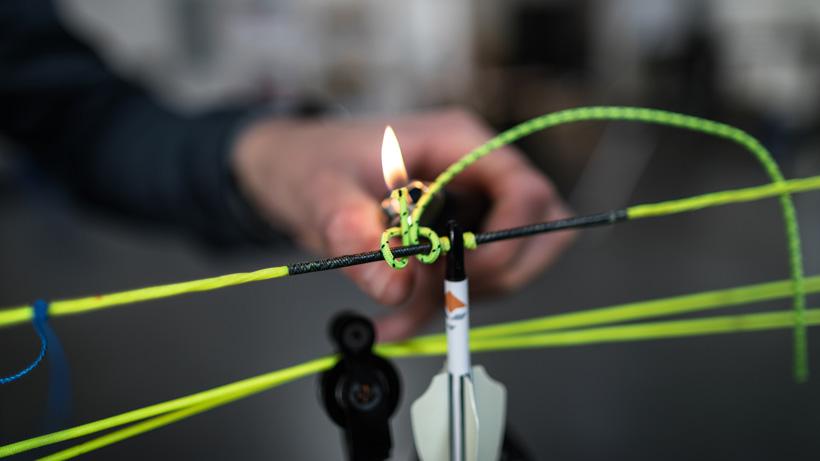





Photo credit: Lorenzo Sartini


Photo credit: Brady Miller

During my archery pro shop days, one of my most commonly fielded questions from customers was regarding their bowstring: When should I replace this? How long should this set last? Do I need aftermarket strings?
The string and cable set on your bow is literally the lifeblood of the entire operation. Good strings will keep cams in sync and your bow in top shooting order. Still, I often encountered a lot of misinformation pertaining to string care and materials used as well as the overall importance of a quality set of strings. In the following article, I’ll go over some of the most important factors when it comes to analyzing your own strings as well as the proper steps to take when purchasing a new set.
When it comes to questions pertaining to bowstrings the decision to replace them or not is at the top of the heap. String life can be dependent on many factors, including where you hunt, how you hunt, year-round maintenance, how the bow is carried, etc. The fact is that string life can vary slightly from user to user, but there is a general rule of thumb that I like to use. For the average archer, replacing a set of strings every two to three years will generally suffice while someone who shoots every day or shoots competitively may want to consider a yearly change. Conversely, those who do not take care of their strings could benefit from yearly string changes even with a minimal amount of shooting.
When it comes to evaluating the life of your string, your best bet is to simply get your bow into a trusted pro shop. General things to look for when a string is nearing its end of usable life can include small frays, broken strands, cams continually coming out of sync, peeps that spin while the bow is drawn and age. At the end of the day, my biggest piece of advice to those considering a string change is this: the costs of handling a situation where a bow is “blown” up due to a string failure can cost two to three times more than simply replacing the strings.
Another question I’ll commonly hear among archers will be the debate as to whether or not they should replace their factory strings. Really, this will largely boil down to the manufacturer of the bow and the materials they are using in their strings. Most package bows and mid-price point bows will generally come equipped with what I would consider as sufficeable strings, meaning they will work, but won’t be reliable. These types of strings can come with a litany of baggage, including continually changing cam orientations, peep issues and an overall loss of bow performance. Most bow companies are now equipping their flagship bows with top tier strings although this is not always the case. The best bet when considering replacing factory strings or when purchasing a new bow will be to simply seek the advice of an experienced tech.
In the past, I have always been the guy to remove factory strings immediately, but technology has really caught up in this day and age and many companies are really putting some effort into their factory sets. I have found over the past few years of tuning and building Mathews bows that their factory Zebra strings are among some of the best and would rival many of the aftermarket companies I have used. Because of the confidence, I have with these stock sets I am simply able to pull my bow from the box, tune and go shoot.
When shopping for aftermarket strings you will be met with many choices, particularly online. Good quality materials such as 452X, 8125 or BCY X are readily available to consumers and professionals alike; however, the actual building process of strings is what sets good quality strings apart from something that will make you want to tear your hair out. Most pro shops will generally have few selections for string manufacturers and most have, hopefully, done their homework and have selected good quality and reputable builders. When purchasing online make sure to do your research. What types of materials are they using or offering? Are the strings pre-stretched before being served? If so, how many pounds of tension are they using? Additionally, in this day and age, customer reviews are wildly available for just about everything.
When personally selecting strings, I’ll generally look for three primary factors before moving on to sifting through reviews: materials used, strings that are pre-stretched under 300+ pounds of pressure and the strand count. Some companies will use fewer strands in their strings to gain faster string speeds, but this comes at a loss of stability and string life. On the flip side, more strands generally equate out to a more stable platform at the cost of some speed. Most strings will generally fall between 20 and 24 strands.
Perhaps the biggest leading factor to string failure in my experience has been an extreme lack of preventative maintenance from the archers. String wax is very likely one of the cheapest components of archery gear you can buy, yet so many people very rarely—if ever—use it. When a bow is shot, there is a lot of string movement happening that is undetectable to the human eye. This incredibly fast movement creates heavy friction and heat between the string’s fibers and will eventually dry and weaken the string as a whole. As a general rule of thumb, I like to apply wax about once a week if I am shooting every day, but this will largely depend on visual inspections. When a string begins to dry from use, small hair-like fibers will become visible although they can be hard to see unless backlit. Once I start seeing these I’ll apply a quick layer of wax to the string and cables.
Consequently, overwaxing a set of strings can be almost as detrimental at not waxing enough. When a string is over-waxed, it becomes tacky to the touch and will attract every piece of dust, dirt and grit it encounters while in the field or in the backyard. This debris collected on the string will now work itself into the fibers during each consecutive shot and prematurely wear down the string. After spending $100+ on a set of string, a $4 tube of wax is worth its weight in prevention.
Photo credit: Brady Miller
At the end of the day, the string is the most pivotal point of your bow and something that needs to be constantly monitored. Not only will a quality set to improve the performance of your bow, but it will also instill more confidence in your shooting and be one less stress while in the backcountry. Evaluate your own setup and consider the quality and age of the current strings. Now is an excellent time to get your bow into the shop for a quick tune-up ahead of the crowds in July and August!